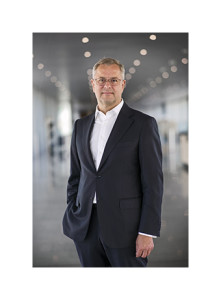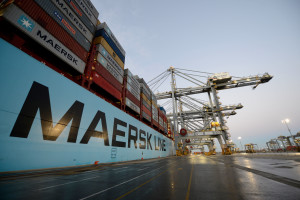Higher freight rates at Maersk Line helped parent group AP Moller – Maersk boost second quarter underlying profit from $134m to $389m.
Revenue grew by 8.4 per cent year-on-year to $9.6bn
Maersk Line contributed an underlying profit of $327m as a result of continued recovery in the container market and focus on restoration of profitability.

“Maersk Line is again profitable delivering in line with guidance, with revenue growing by $1bn year-on-year in the second quarter. The profit was $490m higher than the same quarter last year, based on higher rates,” said group chief executive Søren Skou.
At the end of June, AP Moller – Maersk was hit by the malware “Not Petya” where system shutdowns resulted in significant business impact especially within the container business.
Skou said: “In the last week of the quarter we were hit by a cyber-attack, which mainly impacted Maersk Line, APM Terminals and Damco. Business volumes were negatively affected for a couple of weeks in July and as a consequence, our Q3 results will be impacted. We expect the cyber-attack will impact results negatively by $200-300m.”
Transport & Logistics reported a consolidated revenue of $7.7bn, which was an increase of 15 per cent compared to same quarter last year, and an underlying profit of $442m which was improved significantly, in large part driven by higher container freight rates.
The group said the announced acquisition of Hamburg Süd was progressing as planned. “The transaction remains subject to regulatory approval, with an expected closing in Q4 2017. The announced agreement to divest Mercosul Line will facilitate the authority approval process in Brazil.”
For the full year, Maersk Line expects an improvement in excess of $1bn in underlying profit compared to 2016 (loss of $384m) mainly due to improvements in freight rates and partly increasing volumes. Global demand for seaborne container transport is still expected to increase 2-4 per cent, but in the upper end of the range.







